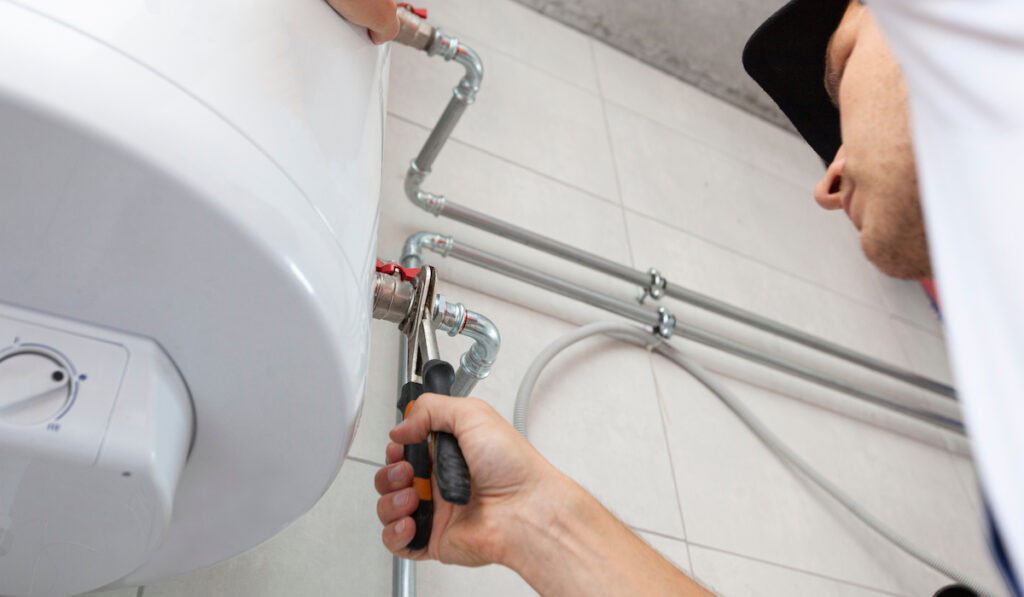Simple Steps to Caring for Your Home's Hot Water SystemEssential Tips on Maintaining Your Home's Hot Water System
Make An AppointmentOn this page below you can locate more decent additional info around What Kind of Maintenance Do Water Heaters Need?.

Warm water is important for day-to-day comfort, whether it's for a rejuvenating shower or cleaning recipes. To ensure your warm water system runs efficiently and lasts longer, normal maintenance is essential. This write-up offers functional tips and insights on exactly how to keep your home's hot water system to prevent disturbances and costly repair work.
Intro
Maintaining your home's hot water system may appear complicated, yet with a few easy actions, you can guarantee it runs smoothly for many years to find. This overview covers everything from comprehending your warm water system to do it yourself upkeep tips and knowing when to employ specialist aid.
Value of Preserving Your Warm Water System
Normal upkeep not only extends the life expectancy of your hot water system however additionally guarantees it runs successfully. Neglecting maintenance can result in reduced effectiveness, greater power expenses, and also early failing of the system.
Indicators Your Warm Water System Demands Upkeep
Recognizing when your hot water system needs attention can prevent major issues. Look out for signs such as inconsistent water temperature, unusual noises from the heater, or rusty water.
Understanding Your Hot Water System
Before diving into maintenance jobs, it's handy to recognize the standard parts of your warm water system. Commonly, this includes the water heater itself, pipes, anode rods, and temperature level controls.
Month-to-month Upkeep Tasks
Normal regular monthly checks can assist catch minor issues before they rise.
Purging the Hot Water Heater
Purging your water heater eliminates sediment buildup, boosting performance and lengthening its life.
Checking and Replacing Anode Rods
Anode rods protect against deterioration inside the storage tank. Checking and replacing them when broken is critical.
Checking and Changing Temperature Setups
Readjusting the temperature settings ensures optimum efficiency and safety.
DIY Tips for Upkeep
You can do several upkeep jobs yourself to maintain your warm water system in leading problem.
Checking for Leakages
Consistently check pipes and links for leakages, as these can lead to water damages and greater bills.
Evaluating Stress Alleviation Valves
Testing the stress relief valve ensures it operates properly and prevents too much pressure build-up.
Protecting Pipes
Shielding hot water pipelines decreases heat loss and can conserve energy.
When to Call an Expert
While do it yourself upkeep is useful, some concerns require expert expertise.
Complex Problems Calling For Professional Assistance
Instances include major leakages, electric problems, or if your hot water heater is continually underperforming.
Routine Expert Upkeep Benefits
Expert upkeep can consist of comprehensive evaluations, tune-ups, and making sure conformity with safety standards.
Final thought
Regular maintenance of your home's hot water system is necessary for performance, longevity, and cost savings. By following these suggestions and understanding when to look for specialist help, you can guarantee a trusted supply of hot water without unforeseen disturbances.
Water Heater Maintenance Tips
Test the TPR Valve
Shut off the power and the cold-water supply valve. Place a bucket under the pipe connected to the temperature-pressure-release (TPR) valve on the top or side of the tank. (This valve opens if the tank pressure gets too high.) Lift the valve’s tab to let some water out, then let go. If water keeps flowing, drain the tank partway, unscrew the old valve with a pipe wrench, and install a new one. Check the Anode Rod
Put a hose to the tank’s drain cock and let out a few gallons of water. Now fit a 1 1/16-inch socket onto the rod’s hex head on top of the heater (or under its top plate) and unscrew the rod. If it’s less than ½ inch thick or coated with calcium, buy a new one, wrap its threads with Teflon tape, put it back in the tank, and tighten securely. Use this segmented rod if headroom above the tank is limited. Drain the Tank and Wash Out Sediment
Drain the remaining water in the tank into the bucket, then stir up the sediment on the tank’s bottom by briefly opening the cold-water supply valve. Drain and repeat until clean water comes out of the hose. Close the drain cock, refill the tank, and turn its power back on. Adjust the Temperature
Find the temperature dial on the side of the tank and unscrew its cover. Adjust the dial to 120 degrees using a flathead screwdriver. For every 10 degrees the temperature is lowered, you can expect to save up to 5 percent in energy costs. Turn the water heater off or the thermostat down to its lowest setting if you plan to be away from home for more than three days. Insulate the Pipes
Buy some self-sticking 3/8-inch-thick foam pipe insulation that matches the pipes’ diameter. Slide the foam over the hot-and cold-water pipes as far as you can reach. Insulating the cold-water pipe prevents condensation in summer. Peel the tape and squeeze the insulation closed. If the pipe is 6 inches or less from the flue, cover it with 1-inch-thick unfaced fiberglass pipe wrap. https://www.thisoldhouse.com/plumbing/21016402/how-to-maintain-a-water-heater
:max_bytes(150000):strip_icc()/how-to-drain-a-water-heater-2719055-hero-35f0548b0f1f42f0b13ba96a33ab8da2.jpg)
I have been very fascinated by How to Maintain Your Water Heater & Prolong its Life and I am praying you enjoyed reading the new blog post. Feel free to take the opportunity to promote this page if you enjoyed it. Many thanks for your time. Revisit us soon.
Get Quote